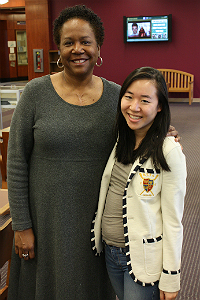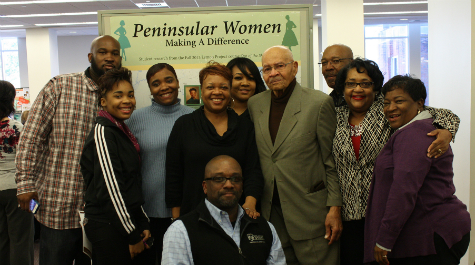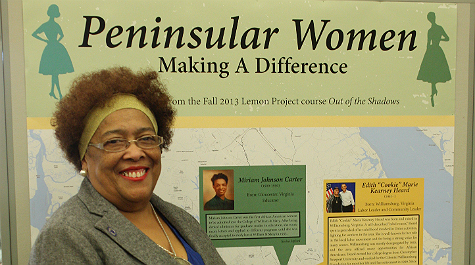Project spotlights contributions of local women to civil rights movement
When Nicole Chung ’13 signed up for a course on women of the civil rights movement, she never imagined she’d be inspired to examine her own life.
“Hearing the impact these women made on their communities pushed me to focus on my own community and to be more aware of what’s happening in the community and world, instead of being in my own William & Mary bubble,” Chung said.
In the fall several William & Mary students took the course “Out of the Shadows: Women of the Civil Rights Movement,” a Lemon Project course taught by Jody Allen, Lemon Project managing director and adjunct visiting assistant professor. While they studied women from all over the country, they wrote biographies of local women who have contributed and are still contributing to the betterment of life on the Peninsula. Their research is featured in a new exhibit at Swem Library, “Peninsular Women: Making a Difference.”
 Chung, a double major in history and film studies, wrote about Jessie Rattley, who served as the mayor of Newport News from 1986 to 1990. Rattley passed away in 2001. Through her research, Chung found the names of Rattley’s daughters and was able to contact them via Facebook.
Chung, a double major in history and film studies, wrote about Jessie Rattley, who served as the mayor of Newport News from 1986 to 1990. Rattley passed away in 2001. Through her research, Chung found the names of Rattley’s daughters and was able to contact them via Facebook.
“It was really exciting to be able to interview Mrs. Rattley’s daughter,” said Chung. “I asked her when she realized her mother was such an active member of the community and she said it was just a normal part of her life. She was at the polls with her mom when she was 5. It was instilled in her to be an active part of her community.”
History major Kristen Scully ’13 was especially excited about the project as her area of study is African American women from slavery and onwards. She chose to research Norvleate Downing-Gross, community activist and executive director of the Office of Human Affairs of Hampton Roads. Downing-Gross, who died in 1983, is remembered for creating housing opportunities and job training for African Americans in the area.
“The women we researched for this project were community organizers and leaders, but not necessarily figureheads or prominent speakers. They were on the ground in grassroots efforts of the civil rights movement. Their stories are the untold stories,” said Scully.
The other women highlighted in the exhibit are Clara Byrd Baker, Alleyne Blayton, Miriam Carter, Edith Heard, Mary Peake and Eula Radcliffe. Seven of the eight women featured are deceased, but several students were able to connect with and interview family members. Edith “Cookie” Heard is still active and working for the betterment of the community, and granted an interview to K.K. Slayton, the student who wrote her biography. Heard was present at the unveiling of the exhibit this month.
“Being involved with the Lemon Project has meant a lot to me because it’s about the history of black people, and white people as well, that lived in Williamsburg and the Toano area. All of our children – black and white – need to know that there was a cohesive relationship among the people in Williamsburg and Toano,” she said.
Scully sees a natural connection between the classroom assignment and the library exhibit, since most of the students relied heavily on Swem resources to write the biographies.
“I love that this exhibit is in Swem because so much of the work we did was with the library’s resources,” she said. “I used a lot of Swem resources – microfilm archives, ILL, primary sources. Special Collections has a great archive of oral histories that a lot of us found helpful.”
Allen hopes the students gained a greater understanding of the untold history that can be found in our own backyards.
“The students discovered that all of these women are/were steadfast in their commitment to their community,” she said. “They worked diligently and often quietly to make a difference and we are all benefitting from their contributions.”
 Skip to main content
Skip to main content


